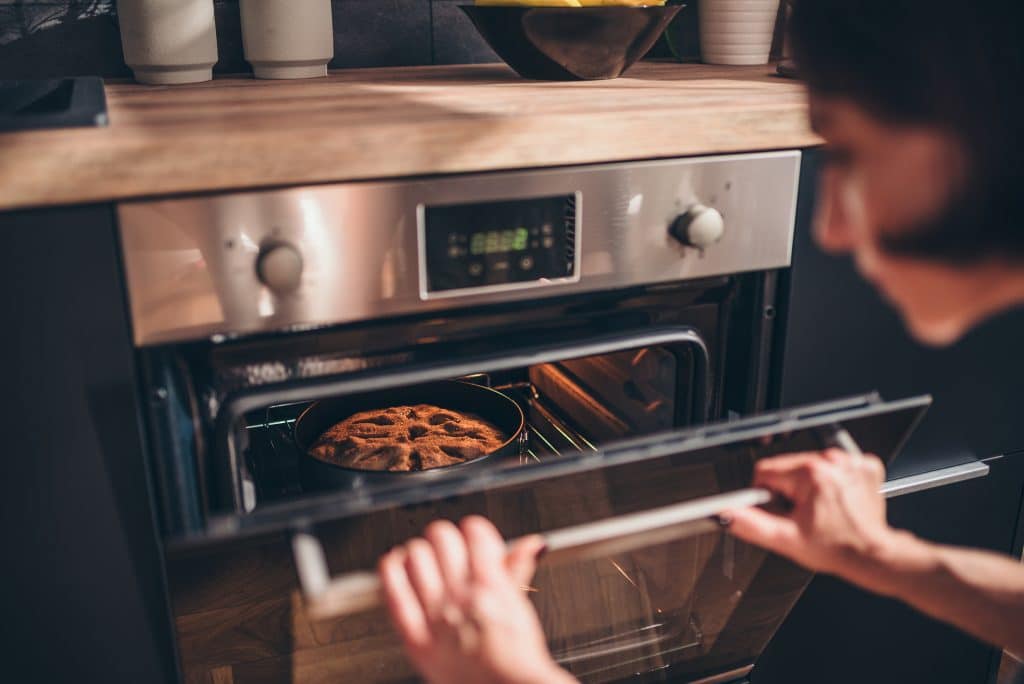Since the advent of modern ovens, convection heat has become a standard in our kitchens. This cooking method, known for its speed and uniformity, seems like the ideal solution for preparing all types of food. However, relying on it consistently might harm the quality of your dishes. Certain foods lose texture, flavor, or moisture when exposed to constant airflow. So, should you really cook everything with convection heat? Here’s what you need to know before using it at every meal.
Understanding The Functioning Of Convection Heat
Before questioning the use of convection heat, it’s essential to understand how it works. Unlike traditional ovens, which use static heat emitted from resistors placed at the top and bottom of the oven, convection heat relies on a fan that evenly distributes hot air throughout the cavity.
This circulation of hot air allows food to cook faster and more evenly, avoiding differences in cooking between the top and bottom of the dish. It is particularly recommended for simultaneous cooking of multiple preparations, as it prevents odors and flavors from mixing.
However, this technical advantage also conceals several disadvantages.
Why Convection Heat Isn’t Always Ideal?
Although convection heat is often touted as a miracle solution, it can pose problems for certain preparations.
- It Dries Out Sensitive Foods: Lean meats, such as chicken or fish fillets, often lose their tenderness when cooked with convection heat. The constant circulation of hot air exacerbates the evaporation of moisture, leaving them dry.
- It Alters The Texture Of Pastries: Cakes that require gentle and gradual cooking, like génoises, brioches, or cookies, do not respond well to convection heat. Excessive ventilation can cause the batter to rise too quickly, leading to collapse at the end of baking.
- It’s Unsuitable For Stews: Dishes like gratin dauphinois, lasagna, or beef bourguignon necessitate slow cooking for flavors to fully develop. Convection heat, by hastening the cooking process, risks compromising the sought-after tender texture.
When To Prefer Natural Convection?
Natural convection, also known as static heat, is often unfairly overlooked. Unlike convection heat, it relies on the gradual rise of heat without air circulation. Certain dishes benefit more from this cooking method:
- Breads And Brioches: They need gradual cooking to rise properly without prematurely hardening the crust.
- Soufflés And Meringues: Too much airflow can destabilize the light structure of these preparations.
- Roasted Meats: Gentle cooking preserves moisture and prevents excessive drying.
- Gratin And Stews: These dishes require time to reveal their flavors and achieve a perfect texture.
Which Foods To Favor For Convection Heat?
Despite its disadvantages, convection heat remains useful for certain recipes:
- Fatty Meats: The hot air ensures even heat distribution, ideal for a leg of lamb or pork roast.
- Roasted Vegetables: Better heat distribution leads to even cooking with a slight crispness.
- Tarts And Quiches: The ventilation enables faster, more even cooking of the crust.
- Dishes Requiring Simultaneous Cooking At Multiple Levels: Convection heat is perfect for avoiding burnt cakes at the bottom while those at the top remain uncooked.
How To Use Your Oven According To Recipes?
To achieve perfect results, it’s best to adapt your cooking method based on the recipe:
- For Light Pastries, opt for static cooking at a moderate temperature.
- For Roasted Meats, use convection heat at a high temperature initially, then reduce the heat gradually.
- For Stews, long static cooking yields an incomparable tender texture.
- For Gratin And Tarts, convection heat is a good choice, but be careful not to cook too quickly to avoid drying the filling.
Should We Say Goodbye To Convection Heat?
The answer is no. Convection heat remains a highly effective cooking method for certain dishes, particularly those that require even cooking. However, using it by default for all types of dishes can diminish the texture and flavor of many recipes.
Thus, the key is to understand your oven well and tailor its use according to the food. No longer viewing convection heat as a necessity, but rather as an option, allows for more flavorful and well-executed dishes.


